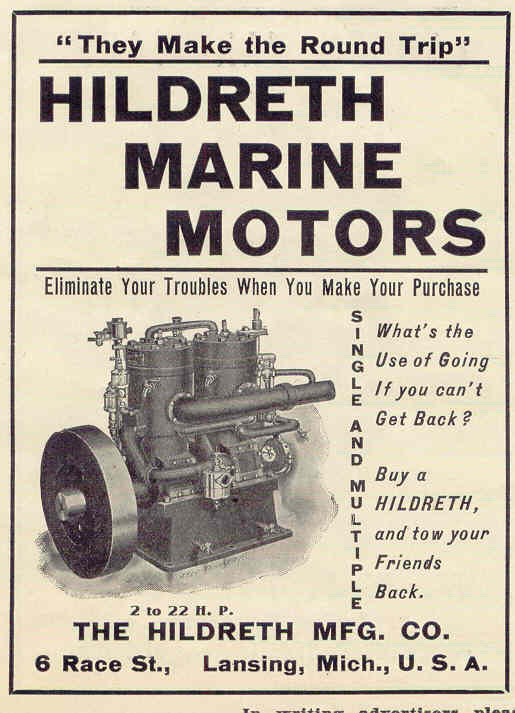|
| Hildreth Marine Engine 1906 |
| Author |
Message |
    
richarddurgee
Senior Member
Username: richarddurgee
Post Number: 1220
Registered: 11-2001

| | Posted on Thursday, September 21, 2006 - 09:05 am: | 




|



 |
    
keith
Senior Member
Username: keith
Post Number: 149
Registered: 02-2002

| | Posted on Thursday, September 21, 2006 - 09:31 am: | 




|
Richard,
Isn't it amasing how something different can be rationalized to be better. I think alot of the early designs were designed to be different and not necessiarly better. If your motor was the same as everybody elses, how could you claim to be superior. If this were a hit and miss, there might be some merit in condeming a long induction tube. Or am I off base here?
Keith |
    
richarddurgee
Senior Member
Username: richarddurgee
Post Number: 1221
Registered: 11-2001

| | Posted on Thursday, September 21, 2006 - 12:10 pm: | 




|
Keith
1907-& 08 Photos show rotary timers
1907 Twin

1908 single

So far I haven't found any ads after 1909 for Hildreth.
Not having real info here I wonder if Hildreth was trying to build a better mouse trap or maybe getting around having to pay the patent rights to mfgr a three port engine?
The idea of being able to keep the gas tank 5-6 inches lower may have been a selling point for the small launches these engs powered ?
The long induction pipes on old engines has always caught my attention and seemed to be a problem of cold starting - the colder the temperature the more difficulty. some of the first changes were to put a tube (Stove) around the intake and duct exhaust to heat it, another was to put a water jacket around it and pump the cylinder exit water through it- but the catch 22 was that you still had to initially start the engine for these to be of any value ??
Many of the tall west coast engs that were in use for many years just shortened the intake pipe and used later auto fuel pumps- this 1910ca hicks used the valve pushrod to activate the pump.
 |
    
jb_castagnos
Senior Member
Username: jb_castagnos
Post Number: 172
Registered: 07-2002

| | Posted on Thursday, September 21, 2006 - 10:30 pm: | 




|
Rotary valves were a good idea, intake timing could be controlled more precisley, opening the port on the way up, closing as soon as the piston starts down. Piston porting had to be a compromise, if you open sooner you close later. Both were better for high speeds than poppets, then reed valves came along. A rotary valve would only work correctly in one direction, if reversed it would be way out of time. |
|
|
|


|


